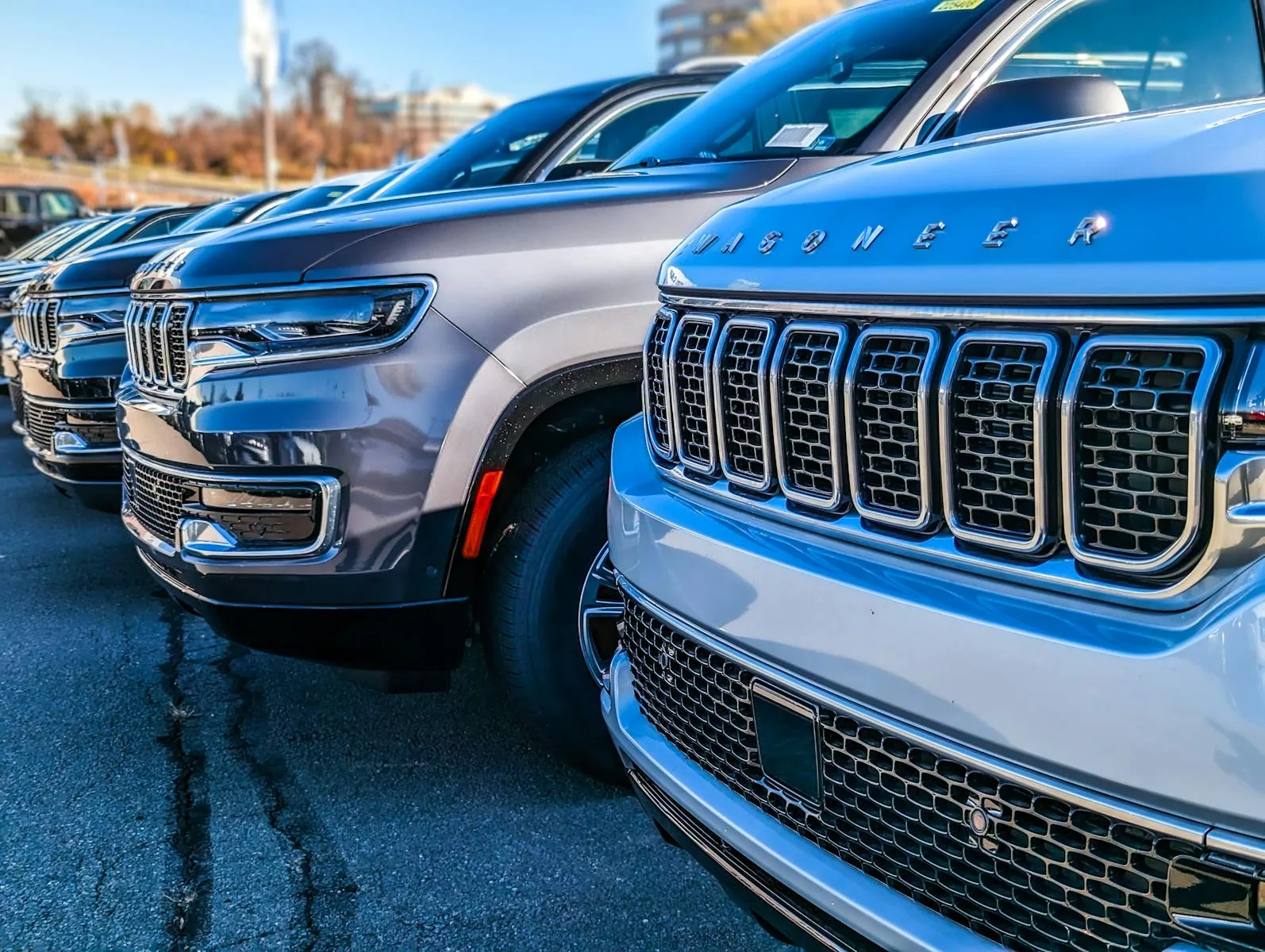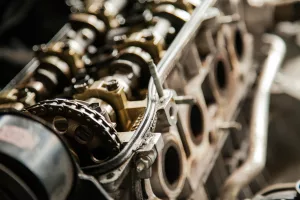Buying a used car can be a great way to save money, but it’s important to ensure that you’re getting a reliable and safe vehicle. Many pre-owned cars may have hidden issues that could lead to costly repairs down the road. Before committing to a purchase, it’s essential to thoroughly inspect the car to avoid unpleasant surprises. Checking a vehicle’s condition from top to bottom will help prevent unexpected expenses and ensure that you’re making a sound investment. Here are 20 crucial things to check before buying a used car.
1. Vehicle History Report
A vehicle history report provides insight into the car’s past, including accidents, title issues, mileage verification, and maintenance history. Services like Carfax and AutoCheck can help you uncover red flags before making a purchase. Checking for previous flood damage, salvage titles, and lemon law buybacks can prevent costly surprises.
A clean history report is a good sign, but it doesn’t replace a physical inspection. Some issues, such as minor accidents or missing maintenance records, may not appear in the report. Always cross-check the details with the seller and have a mechanic inspect the car to verify its condition. Requesting service records from the seller can also help confirm whether regular maintenance was performed.
2. Exterior Condition
Inspect the car’s body panels, paint, and alignment. Look for rust, dents, scratches, and signs of repainting, which could indicate past accidents. Uneven gaps between panels may suggest previous structural damage.
Walk around the vehicle in good lighting conditions and feel for rough surfaces that may indicate body filler used to cover damage. Check the doors, trunk, and hood for proper alignment and ease of opening and closing. If you notice uneven paint texture, it could be a sign of touch-ups done after repairs. Also, check the windshield and windows for cracks or chips, as these can spread over time and require costly replacements.
3. Tires and Wheels
Check the tire tread depth and ensure even wear across all four tires. Uneven wear could signal suspension or alignment issues. Also, inspect the rims for dents or cracks, which can affect handling and safety.
Make sure the tires are from the same brand and model, as mismatched tires could indicate past damage. Additionally, check for dry rot or cracks on the rubber, which may lead to blowouts. Replacing tires can be expensive, so factor that into the total cost of the car. A quick test is using a penny—if Lincoln’s head is visible when placed in the tread, the tires are too worn and will need replacement soon.
4. Undercarriage and Rust
Examine the undercarriage for rust, leaks, or damage. Rust can spread over time, weakening structural components. Pay close attention to areas around the wheel wells and frame.
Look for wet spots under the vehicle, which may indicate fluid leaks from the engine, transmission, or differential. If you see excessive rust or corrosion, it could suggest exposure to harsh weather conditions, like road salt, which accelerates deterioration. Structural rust, especially on the frame, can compromise the safety of the vehicle and should be a major red flag.
5. Engine Condition
Pop the hood and inspect the engine bay. Look for leaks, corrosion, or worn-out belts and hoses. Check the oil level and quality—dirty or low oil can indicate poor maintenance.
Remove the oil cap and check for a milky residue, which could indicate a coolant leak. Also, inspect the engine mountings for cracks or excessive movement when the engine is running, which may indicate future costly repairs. Listen to the engine at idle and while revving slightly—knocking or rattling noises may signal internal damage.
6. Transmission and Fluid Levels
Check the transmission fluid to ensure it’s at the proper level and not burnt (which has a dark color and burnt smell). A failing transmission is expensive to repair, so pay close attention to any irregularities.
Test how the car shifts gears; if there’s any hesitation or jerking, it could be a sign of transmission trouble. On a test drive, listen for whining or grinding noises when changing gears, which may indicate internal wear. Automatic transmissions should shift smoothly, while manual transmissions should engage gears without excessive force or grinding.
7. Suspension System
Push down on each corner of the car. If it bounces excessively, the shocks or struts may be worn out. Listen for clunking noises while driving, which could indicate suspension problems.
Uneven ride height may also point to a failing suspension system. Test the car over speed bumps and rough roads to see if it absorbs shocks well or feels excessively stiff. A properly functioning suspension should keep the car stable and comfortable over varying terrains.
8. Braking System
Test the brakes for responsiveness. Squeaking, grinding, or pulsating can indicate worn brake pads, rotors, or calipers. A spongy brake pedal may suggest air in the brake lines or fluid issues.
Take the car to an empty parking lot and perform a few sudden stops to ensure the brakes function properly. If the car pulls to one side while braking, it may indicate uneven brake wear or failing calipers. Ensure the parking brake holds the vehicle in place when engaged.
9. Lights and Electrical System
Check that all headlights, brake lights, turn signals, and interior lights are functioning properly. Test the power windows, locks, and side mirrors to ensure they operate smoothly.
Turn on the wipers and check for streaking or irregular movement, as wiper motor failures can be costly to fix. Make sure the dashboard and infotainment screens work properly, as electrical repairs can be expensive. Test all power features such as seat adjustments, defrosters, and heated seats if applicable.
10. Battery Health
Inspect the battery terminals for corrosion and check the manufacturing date. Most car batteries last around 3-5 years, so an older battery may need replacement soon.
Test the battery voltage if possible, as a weak battery may lead to starting issues. If the battery looks swollen or leaks fluid, it may need immediate replacement. Cold weather can further strain an aging battery, so be sure it can handle seasonal changes.
11. Air Conditioning and Heating
Turn on the air conditioning and heating systems to verify they function properly. Weak airflow, strange odors, or loud noises may indicate problems with the compressor or vents.
Run the system on both maximum cold and hot settings to ensure proper function. If the A/C takes too long to cool or doesn’t blow cold air, it may have a refrigerant leak. Likewise, if the heating system fails to warm up quickly, there may be a clogged heater core or thermostat issue.
12. Dashboard Warning Lights
When starting the car, check for any warning lights that stay on, such as the check engine, ABS, or airbag lights. Diagnostic tools can help pinpoint potential problems.
Consider requesting a pre-purchase diagnostic scan to ensure no hidden issues exist. Ignoring warning lights can lead to expensive repairs later.
13. Odometer Reading
Verify that the mileage matches the vehicle’s condition and history report. An extremely low or high mileage reading can be a red flag if it doesn’t align with the car’s age.
Check for signs of odometer tampering, such as misaligned digits or inconsistent wear and tear inside the vehicle. High mileage isn’t always bad, but it should be factored into the car’s overall reliability and expected longevity.
14. Steering and Alignment
During a test drive, check if the car pulls to one side, which may indicate alignment issues. Also, ensure the steering wheel doesn’t shake or feel loose at different speeds.
Listen for knocking or clunking noises when turning, which could indicate worn-out steering components. Proper alignment ensures the car drives smoothly and prevents uneven tire wear.
15. Exhaust System
Inspect the exhaust pipe for black, blue, or white smoke, which can signal oil burning, coolant leaks, or engine problems. Also, listen for unusual noises from the exhaust system.
A rattling noise may indicate a failing catalytic converter, which is costly to replace. Make sure there are no visible leaks or excessive rust in the exhaust system.
16. Sound System and Infotainment
Test the radio, Bluetooth, touchscreen, and speakers to ensure they work correctly. Infotainment system repairs can be costly, so confirm all features function as expected.
If the car has a backup camera or navigation system, ensure they work without lag or glitches. Test all buttons and knobs for responsiveness.
17. Spare Tire and Jack
Check if the spare tire, jack, and lug wrench are included and in good condition. Some newer cars come with tire repair kits instead of spare tires, so be aware of what’s provided.
Inspect the spare tire for cracks or wear, as an old or damaged spare may not be useful in an emergency.
18. Interior Wear and Comfort
Examine the seats, carpets, and dashboard for tears, stains, or excessive wear. Unpleasant odors, especially a moldy smell, could indicate water damage or leaks.
Test seat adjustments, heating or cooling functions, and ensure seatbelts work properly. A well-maintained interior can indicate how well the car was cared for overall.
19. Test Drive Performance
A test drive is one of the most important steps. Pay attention to acceleration, braking, shifting, and suspension feel. Listen for any rattling, knocking, or unusual noises while driving.
Drive at different speeds and test both city and highway conditions. The car should respond smoothly to throttle inputs, braking should be firm, and gear shifts should be seamless.
20. Price Comparison and Negotiation
Research the car’s market value using tools like Kelley Blue Book (KBB) or Edmunds to ensure you’re getting a fair deal. If issues arise during inspection, negotiate a lower price or request necessary repairs before finalizing the purchase.
Compare prices from multiple sellers and dealers to find the best deal. Be prepared to walk away if the seller refuses to negotiate on a car with evident issues.
Final Thoughts
Buying a used car requires careful inspection to ensure reliability and avoid costly surprises. By following this checklist and having a trusted mechanic assess the vehicle, you can make a confident purchase decision. Investing time in thorough checks can save you money and prevent future headaches. Be patient, compare multiple options, and ensure you’re getting the best value for your budget. Happy car hunting!




